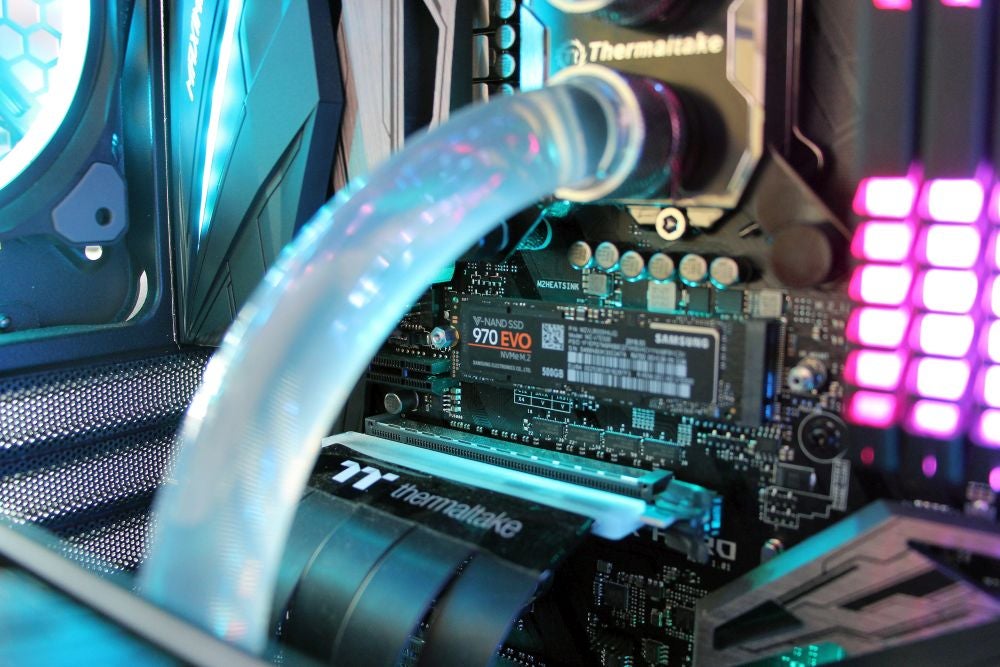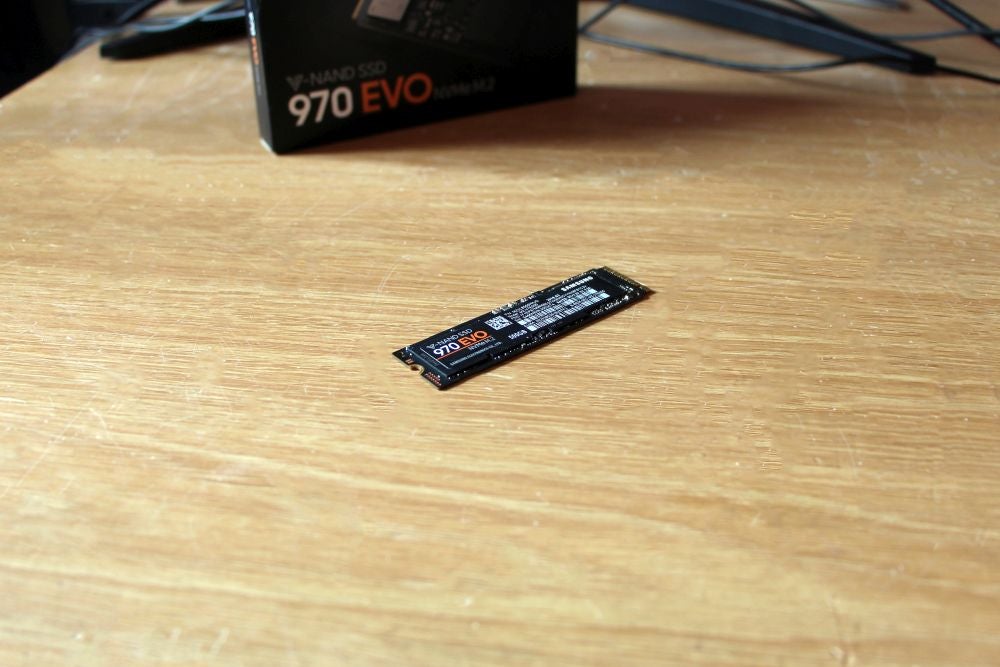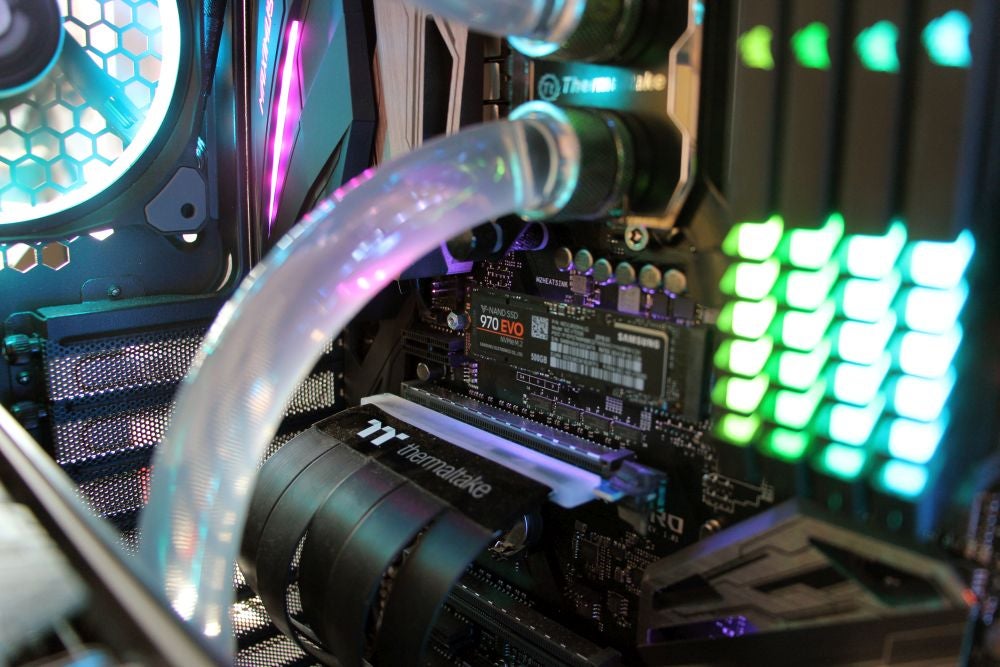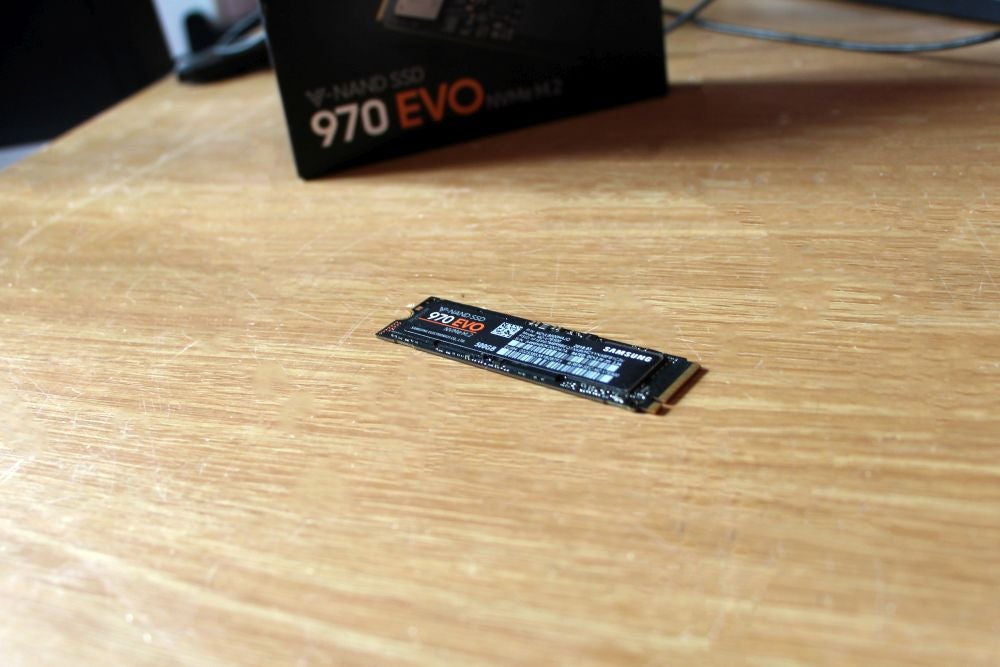Samsung 970 Evo 500GB Review
Samsung 970 Evo 500GB
The Samsung 970 Evo is a more affordable SSD – but is it worth the cash saving?
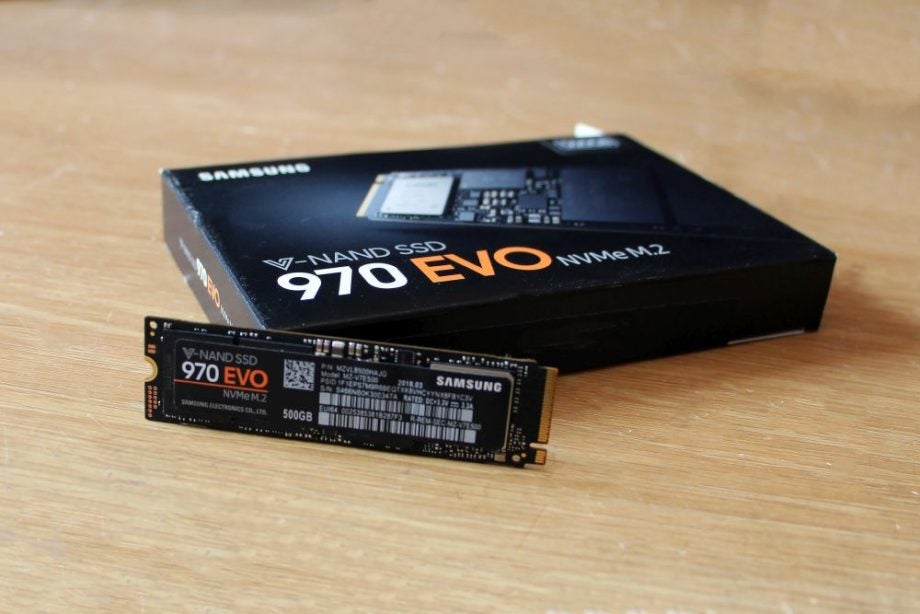
Verdict
Pros
- Excellent, consistent speeds
- Solid endurance ratings
- Cheaper than 970 Pro
Cons
- 970 Pro quicker in some tests
- 970 Pro offers better endurance
Key Specifications
- Review Price: £180
- 500GB capacity
- 64-layer 3D V-NAND
- Phoenix 5-core controller
- 2280 form factor
What is the Samsung 970 Evo 500GB?
The Samsung 970 Evo is the more intriguing SSD of the firm’s two latest releases. While the flagship 970 Pro tends to grab the headlines, Samsung’s Evo drives are the more affordable products, and the models that most folk tend to buy.
However, the market is packed with fast SSDs now, and they’re cheaper than ever. So does the 970 Evo still warrant a place in your PC?
Related: Best streaming sites 2018
Samsung 970 Evo 500GB – Design and features
The 970 Evo is the more mainstream SSD from Samsung’s two recent launches, so it’s manufactured in a larger range of capacities.
The most affordable 970 Evo drive is the 250GB version, costing £110. I’ve reviewed the 500GB model, which will set you back £180; the 1TB version arrives at £330. Samsung also produces a huge 2TB variant, which costs a whopping £650.
These prices remain high in the wider market, but they do compare well to the two 970 Pro drives available. The 512GB model of Samsung’s flagship costs £219, while the 1TB model is £399.
The 970 Evo is a more affordable option, then, which means you get a modified specification when compared to the flagship 970 Pro.
The biggest change from the 970 Pro is in the memory chips themselves. The pricier drive relied on 2-bit MLC memory, which is faster, but more expensive and less efficient in terms of how many transistors it can include. The 970 Evo uses 3-bit TLC memory, which crams more transistors into each chip to bring the cost down – but at the expense of a little speed.
The 3D V-NAND inside the 970 Evo uses 64 layers, which matches the 970 Pro and is an improvement on last year’s 40-layer V-NAND.
Don’t be fooled by Samsung’s claims that the 970 Evo actually uses 3-bit MLC – that isn’t really a thing that exists, and it’s just an attempt by the Korean firm to rebrand TLC memory as MLC, which tends to have a better reputation for speed.
It’s easy to see why Samsung is taking this tact. The use of 3-bit memory inside the 970 Evo will mean that this drive is a little slower than the 2-bit memory inside the 970 Pro – simply because it takes the controller less time to write data to 2-bit chips than to more complex 3-bit chips.
The 970 Evo uses the new Phoenix controller. That chip was introduced in the Pro version of the drive, and it’s a smart bit of silicon. It has five cores, with one dedicated to communicating with its host system, and its reduced clock-speeds mean that temperatures are lowered. The controller is also topped with a small nickel plate to improve thermal performance.
The 970 Evo’s lesser price and TLC memory is reflected in this SSD’s endurance ratings. The 250GB model is rated for 150TB of write performance, with those figures doubling with every capacity increase – so the 2TB drive is rated for 1200TB of write endurance.
They’re all excellent figures that won’t prove troublesome in any gaming or consumer PC, but the 970 Pro does offer better endurance. In fact, its ratings double on the 512GB and 1TB models when compared to their 970 Evo equivalents.
In other, peripheral areas the 970 Evo remains unchanged. It still has the excellent five-year warranty, and the drive looks exactly the same, with the familiar 2280 form factor and the layer of cooling copper beneath Samsung’s branding sticker. 256-bit AES encryption with Microsoft eDrive and TCG Opal 2.0 remains, and the Magician app is still present for drive management.
Related: Best PC games 2018
Samsung 970 Evo 500GB – Performance
The switch to 3-bit TLC memory rather than 2-bit MLC memory does mean that the 970 Evo can’t quite match the 970 Pro for speed, but the gap between the two drives is often negligible.
In CrystalDiskMark, for instance, the 970 Evo’s sequential read speed of 3568MB/sec is actually 1MB quicker than the 970 Pro. Impressively, it’s also faster than last year’s 960 Evo and 960 Pro drives, albeit by small margins.
The 970 Evo reads smaller files with a pace of 433MB/sec – which is 10MB/sec quicker than the 970 Pro.
The 970 Evo’s read speeds only fell behind the more expensive drive when handling the smallest files. At this level the Evo hit a decent pace of 49MB/sec, but the Pro managed 60MB/sec.
In CrystalDiskMark, the 970 Evo scored a write pace of 2495MB/sec. That, again, is better than the 970 Pro – the flagship drive topped out at 2336MB/sec. Those results are all faster than last year’s drive. The 960 Evo could only manage a write speed of 1617MB/sec.
The 970 Evo maintained a slim lead in the 4K Q32TI write test, where its result of 323MB/sec was 19MB/sec ahead of the 970 Pro. And, just like when reading the smallest files, the 970 Evo only fell behind when writing them: its final 4K result of 168MB/sec was 5MB/sec behind the pricier 970 Pro.
The 970 Evo’s pattern of great speed but lesser pace when reading and writing the smallest files was repeated in the Atto benchmark.
In Atto’s file reading test, the 970 Evo only hit the 1000MB/sec mark when reading 32KB files – but the 970 Pro managed it when reading 16KB files. The 970 Evo was also a little slower than the 970 Pro in every read test up to that point – starting at 512B and working upwards in small increments. The 970 Evo’s top speed in Atto was an impressive 3010MB/sec, but the 970 Pro peaked at 3340MB/sec.
When writing in Atto, the 970 Evo was a little slower than the 970 Pro when working with the smallest files, but both drives broke the 1000MB/s barrier when writing 32KB files. The 970 Evo’s peak write speed of 2320MB/sec is actually a little better than the 970 Pro, which topped out at 2150MB/sec.
Related: The best gaming monitors
Why buy the Samsung 970 Evo 500GB?
The Samsung 970 Evo may not be the flagship drive, but there’s arguably more to like about this drive than the range-topping 970 Pro.
For starters, the speeds are excellent. The 970 Evo outpaces the 970 Pro in a couple of tests, and it’s never far behind in the rest of the benchmarks. Compared amongst the rest of the market, the 970 Evo remains faster than almost anything else.
In those tests where the 970 Evo falls behind, it’s never by a significant margin – and you’ll never notice the speed difference inside the average PC. And, while the 970 Evo does have lesser endurance ratings than the 970 Pro, only the meatiest workstation systems will push those figures to the limit. For the vast majority of us, the 970 Evo has ample longevity.
The 970 Evo is cheaper than the 970 Pro, while offering similar speeds and a great specification. The 970 Pro may remain the ultimate SSD, but the 970 Evo is a more balanced drive that most people would be better off buying.
Verdict
The 970 Evo may not have the endurance ratings of the 970 Pro, but the majority are unlikely to notice. With excellent speeds and a keen price, the 970 Evo is the best mainstream SSD on the market.


